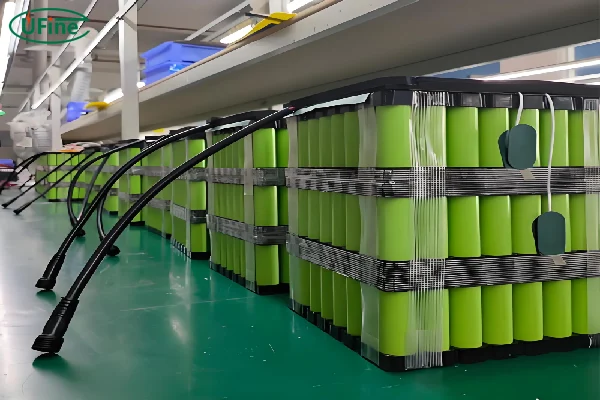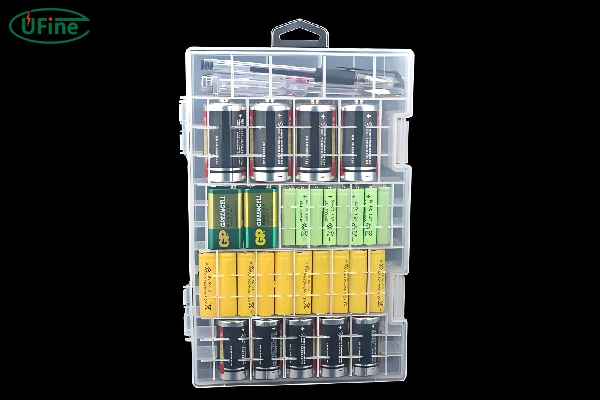This comprehensive guide delves into the world of battery storage, providing a detailed roadmap for preserving your batteries’ power and maximizing their potential. We’ll explore the ideal storage environment, delve into specific techniques for long-term and home storage, and provide expert advice on handling new and damaged batteries. By mastering the art of battery storage, you can unlock the full potential of your batteries and keep them powering your life for years to come.
Part 1. The importance of battery storage
The way you store your batteries can have a profound impact on their performance and longevity. Improper storage can lead to a range of issues, including:
- Reduced Capacity: Batteries left in extreme temperatures or humid environments can experience a decrease in their capacity, meaning they won’t hold as much charge as they used to.
- Increased Self-Discharge: Batteries naturally lose charge over time, but this process is accelerated by improper storage conditions. Storing batteries in high temperatures or humid environments can lead to faster self-discharge, resulting in a shorter lifespan.
- Corrosion: Batteries can corrode if exposed to moisture or humidity. Corrosion can damage the battery’s internal components, leading to reduced performance and potential safety hazards.
- Safety Risks: Damaged or improperly stored batteries can pose safety risks, such as fires or explosions. It’s essential to handle batteries with care and store them in a safe and secure environment.
Part 2. The ideal battery storage environment
The ideal storage environment for batteries prioritizes three key factors: temperature, humidity, and ventilation.
-
Temperature: Extreme temperatures, both hot and cold, can significantly impact battery performance and lifespan. Ideally, batteries should be stored in a cool and dry environment with a temperature between 15°C and 25°C (59°F and 77°F). Avoid storing batteries in direct sunlight, near heat sources, or in freezing temperatures.
-
Humidity: High humidity can accelerate corrosion and damage battery components. Storing batteries in a dry environment with low humidity is crucial for preserving their performance and longevity. Use silica gel packets or other moisture absorbers to help maintain a dry storage environment.
-
Ventilation: Proper ventilation is essential for preventing the buildup of gases that can be released by batteries, especially during charging or discharging. Ensure that the storage area is well-ventilated to allow for air circulation and prevent the accumulation of harmful gases.
Part 3. Long-term battery storage
For long-term storage, it’s essential to take extra precautions to ensure your batteries remain in optimal condition. Here’s a step-by-step guide for long-term battery storage:
-
Clean the Batteries: Before storing batteries long-term, clean them gently with a dry cloth to remove any dirt, dust, or debris. This will help prevent corrosion and ensure optimal contact with the terminals.
-
Charge to the Appropriate Level: The ideal charge level for long-term storage varies depending on the battery type. For lead-acid batteries, it’s best to store them fully charged. For lithium-ion batteries, it’s generally recommended to store them at a moderate charge level, around 40% to 60%. Overcharging or over-discharging can damage lithium-ion batteries.
-
Use a Storage Container: Store batteries in a dry, airtight container to protect them from moisture and dust. Consider using a container specifically designed for battery storage, which may include features like silica gel packets or other moisture absorbers.
-
Label and Date the Batteries: Label the batteries with their type and date of storage. This will help you track their age and ensure they are used within their recommended storage lifespan.
-
Store in a Cool, Dry, and Dark Place: Select a cool, dry, and dark place to store your batteries. Avoid storing them in direct sunlight, near heat sources, or in areas with high humidity. An ideal storage temperature is between 15°C and 25°C (59°F and 77°F).
Part 4. Home battery storage
Storing batteries at home is often a necessity, whether it’s for spare batteries for your devices or for batteries used in everyday appliances. Here are some practical tips for home battery storage:
-
Organize Your Batteries: Keep batteries organized by type and size to make it easier to find the ones you need. Consider using a battery organizer or a drawer with compartments to separate different types of batteries.
-
Store Batteries Separately: Avoid storing batteries together in a jumbled mess. This can lead to accidental short circuits or damage. Keep batteries separated by type, size, and charge level.
-
Use a Dry Storage Container: Store batteries in a dry, airtight container to protect them from moisture and dust. Consider using a container with a desiccant packet to absorb moisture.
-
Avoid Extreme Temperatures: Keep batteries away from heat sources, such as radiators or stoves, and avoid storing them in direct sunlight. Extreme temperatures can damage batteries and shorten their lifespan.
-
Check for Leaks or Corrosion: Periodically check batteries for leaks or corrosion. If you notice any signs of damage, dispose of the batteries properly. Never attempt to repair or recharge a damaged battery.
Part 5. New battery storage
New batteries are often stored for extended periods before they are used. Here’s how to store new batteries to ensure they remain in optimal condition:
-
Store in Original Packaging: If possible, store new batteries in their original packaging. The packaging often includes a desiccant packet to absorb moisture and protect the batteries.
-
Avoid Direct Sunlight: Don’t store new batteries in direct sunlight. Ultraviolet radiation can damage batteries and shorten their lifespan.
-
Store in a Cool, Dry Place: Select a cool, dry place to store new batteries. Avoid storing them in humid environments or near heat sources.
-
Check for Expiration Dates: Some batteries have expiration dates. Check the packaging for the expiration date and use the batteries within that timeframe for optimal performance.
Part 6. Damaged battery storage
Damaged batteries should be handled with care and disposed of properly. Never attempt to repair or recharge a damaged battery. Here’s how to handle damaged batteries:
-
Identify the Damage: Inspect the battery for any signs of damage, such as leaks, corrosion, punctures, or swelling.
-
Isolate the Battery: If you find a damaged battery, isolate it from other batteries and devices to prevent any potential hazards.
-
Dispose of Properly: Dispose of damaged batteries according to local regulations. Check with your local waste management agency for information on battery disposal.
-
Avoid Contact: Avoid direct contact with leaking or corroded batteries. Wear gloves and eye protection if you need to handle a damaged battery.
By understanding the best practices for storing batteries, you can significantly extend their lifespan, enhance their performance, and ensure their safety. Remember to prioritize a cool, dry, and well-ventilated storage environment, handle batteries with care, and dispose of damaged batteries properly. With the right knowledge and attention to detail, you can unlock the full potential of your batteries and keep them powering your life for years to come.
Related Tags:
More Articles

How to Choose the Best Floor Scrubber Battery for Commercial Cleaning?
Selecting the ideal floor scrubber battery ensures a long runtime, rapid charging, and minimal maintenance for efficient commercial cleaning operations.
Battery for Blower vs Battery for Leaf Vacuum: Which One Should You Choose?
Battery for blower vs leaf vacuum—learn the key differences in power, fit, and runtime to choose the right battery for your outdoor tool needs.
How to Choose the Right Battery for Blower?
Choosing the right blower battery? Consider voltage, capacity, chemistry & usage. This guide helps match the best battery for peak performance.
How to Choose the Best Insulated Battery Box for Lithium Batteries?
Choosing the Best Insulated Battery Box for Lithium Batteries? Discover key factors such as size, material, and safety for optimal protection and performance.
7 Critical Elements on a Lithium Battery Shipping Label
What must be on a lithium battery shipping label? Learn 7 key elements to ensure safety, legal compliance, and correct handling across all transport modes.






